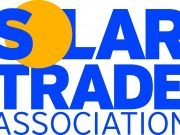
Solar power will be ‘massive’ in the future and will therefore need a dedicated strategy in the manner of the gas sector according to the Solar Trade Association (STA) commenting after the publication of the UK government’s new Energy Bill.
Cost reductions of around 70% over the last few years has meant that the solar power sector is now completely confident that solar can compete effectively with other forms of power generation within the next decade. This is supported by research from the Intergovernmental Panel on Climate Change (IPCC) which shows that solar power could be the largest source of electricity in the world by 2050.
“Solar could readily deliver a third of the UK’s power supply, using south-facing roofs and facades alone” said STA PV specialist Ray Noble. “This technology will be massive. Furthermore solar puts the power to generate directly in the hands of millions, not the few. DECC and its Electricity Market Reform agenda now need to fully recognise the major role that solar power will play in transforming our electricity markets. Solar power means a bottom-up energy revolution and any Government serious about breaking open the electricity market to much greater consumer choice and competition should be right behind us.”
Although solar power can be deployed relatively quickly both utility-scale solar and solar roof schemes are awaiting political clarity on their support framework, something that needs to be resolved in order to attract investment. The STA believes that the answer is a proper solar power strategy in which the major barriers to solar power development are removed along with the uncertainty currently facing the non-domestic sectors of the market.
While the STA supports the establishment of a Government-owned company to act as single counterparty for Contracts for Difference (CfDs) and welcomes the decision to allocate CfDs on a first-come, first-served basis, it is nevertheless concerned about a variety of other issues affecting the market. There is a lack of recognition in the Electricity Market Reform (EMR) of the role of on-site self supply, the STA believes, and the Feed-in Tariff (FIT) size threshold is currently too low at 7.1p to stimulate the market. It is particularly concerned about the existing 250kW-5MW FIT band which is too low, at and believes that an increase to 8p would help to kick start the market.
Another issue the STA would like to see resolved is the question of market access for independent renewable generators. In the past independent generators have relied on Power Purchase Agreements (PPAs) driven largely by the Renewables Obligation (RO), but the RO will be closed in 2017 and the PPA market is currently in a poor state. The access issue will probably be dealt with through secondary legislation later next year, but that is a delay which will be of some concern to investors.
Further information:

